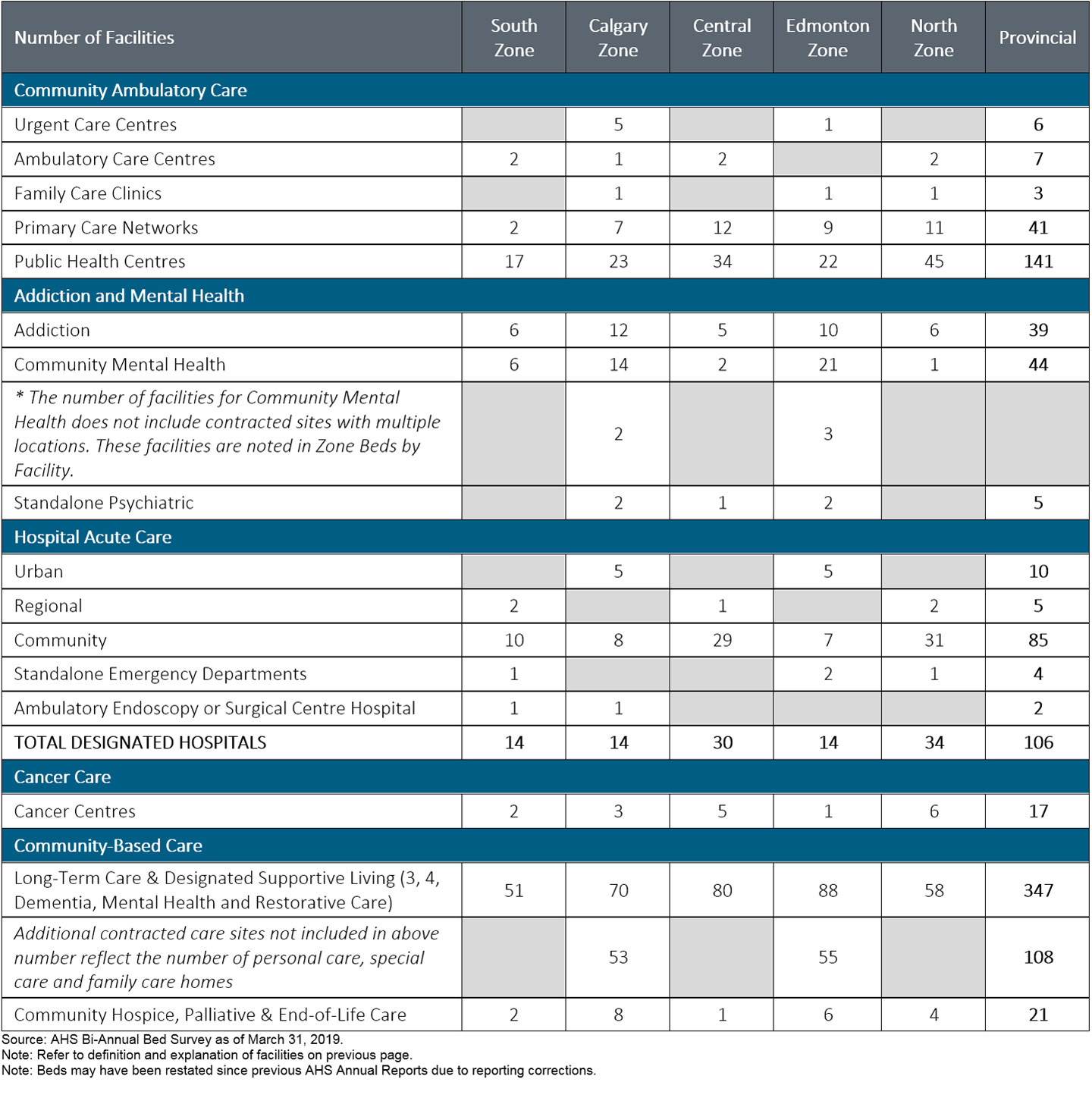
By working together as one health system, we have been able to improve patient outcomes, and enhance experiences for patients, clients and families, as well as for our 125,000- plus hard-working staff, physicians and volunteers.
The following information are excerpts from the March 31, 2019 audited consolidated financial statements and Financial Statement Discussion and Analysis.
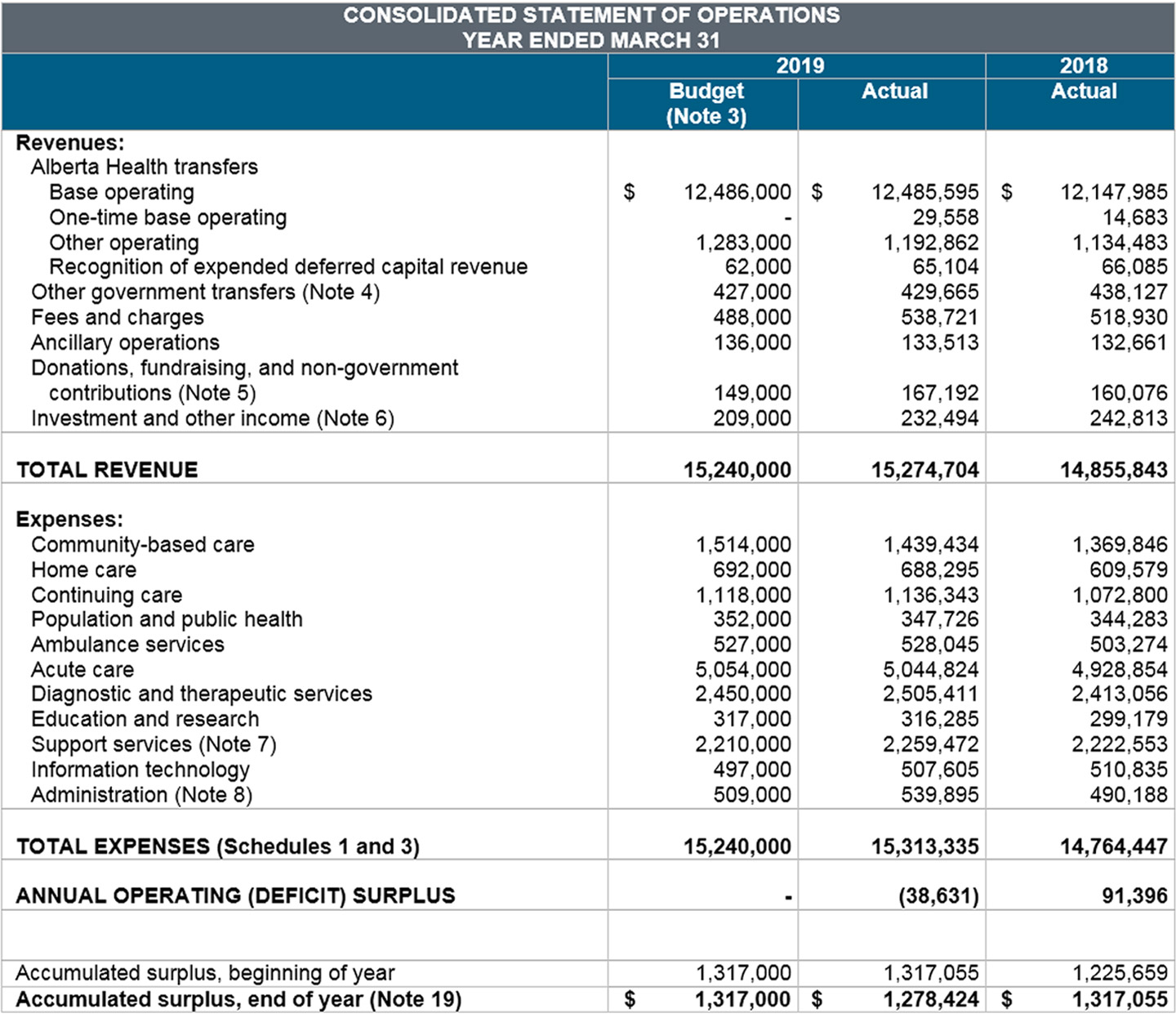 The numbers presented in the table above are in the thousands.
The numbers presented in the table above are in the thousands.
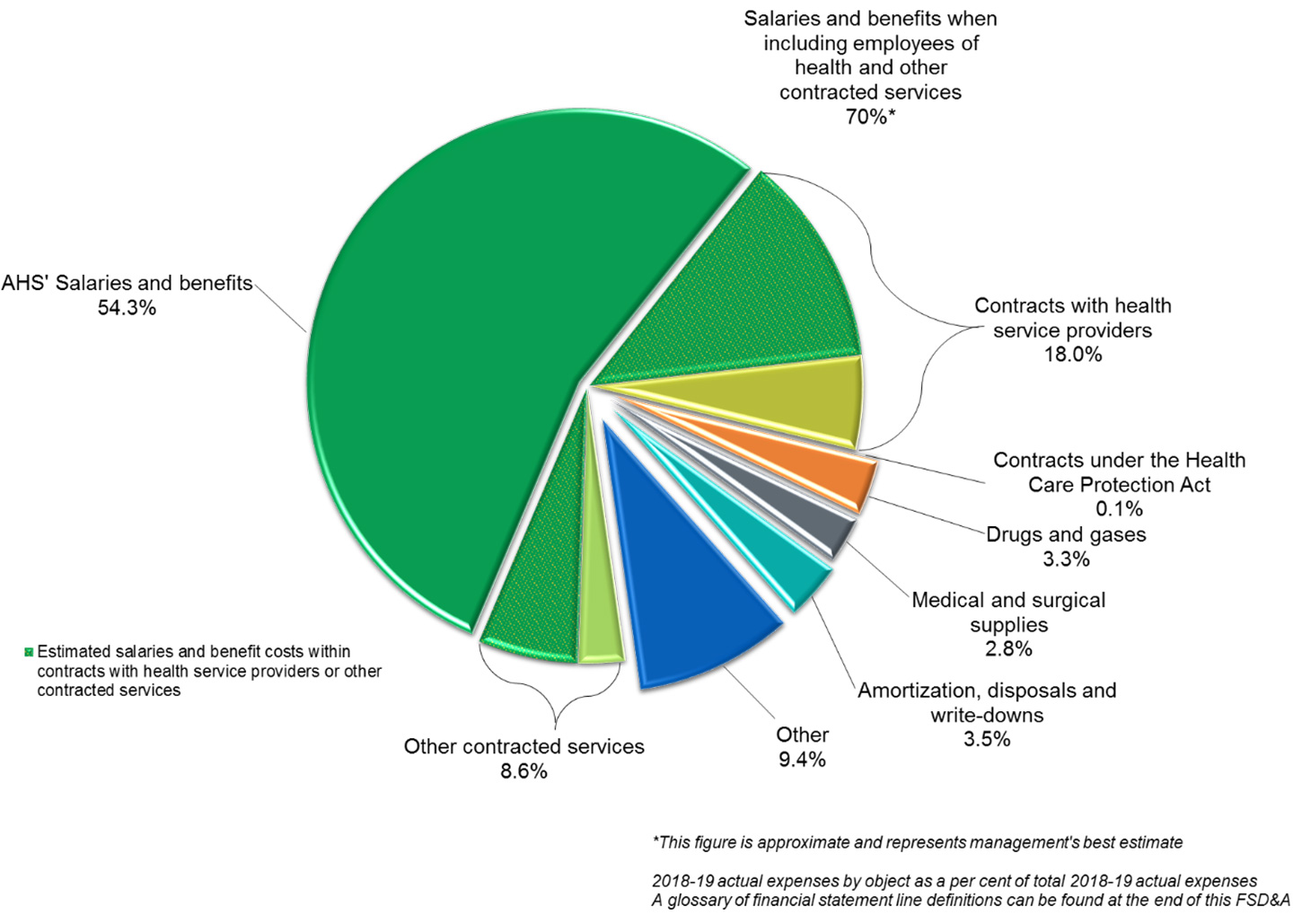
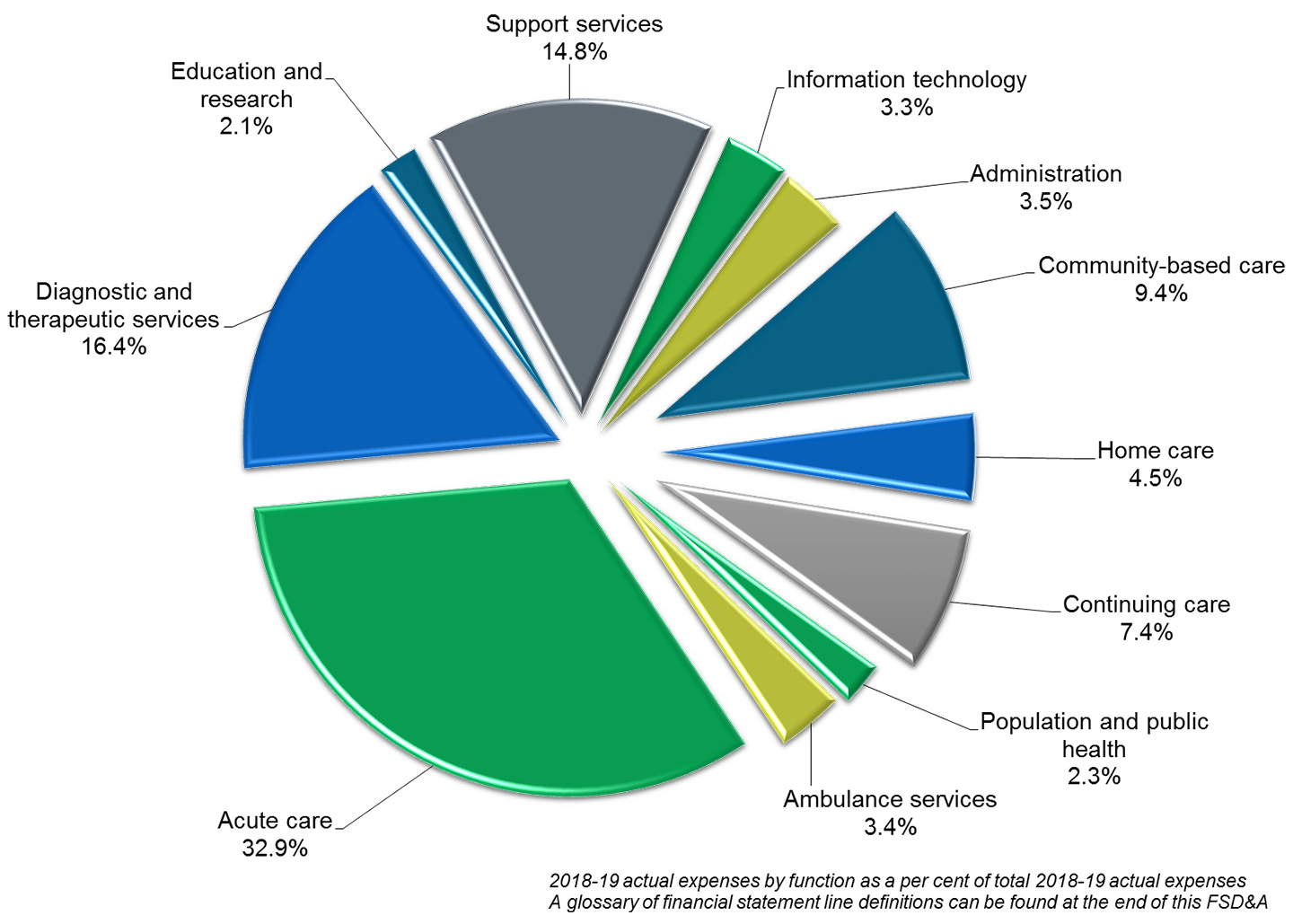
AHS has 13 performance measures that enable us to evaluate our progress and link our objectives to specific results. Targets were established using historical performance data, benchmarking with peers, and consideration of pressures that exist within zones and sites. This approach resulted in targets that, if achieved, would reflect a performance improvement in the areas of our Health Plan’s 12 objectives. Targets were endorsed by AHS and Alberta Health as published in the 2017-2020 Health Plan and Business Plan.
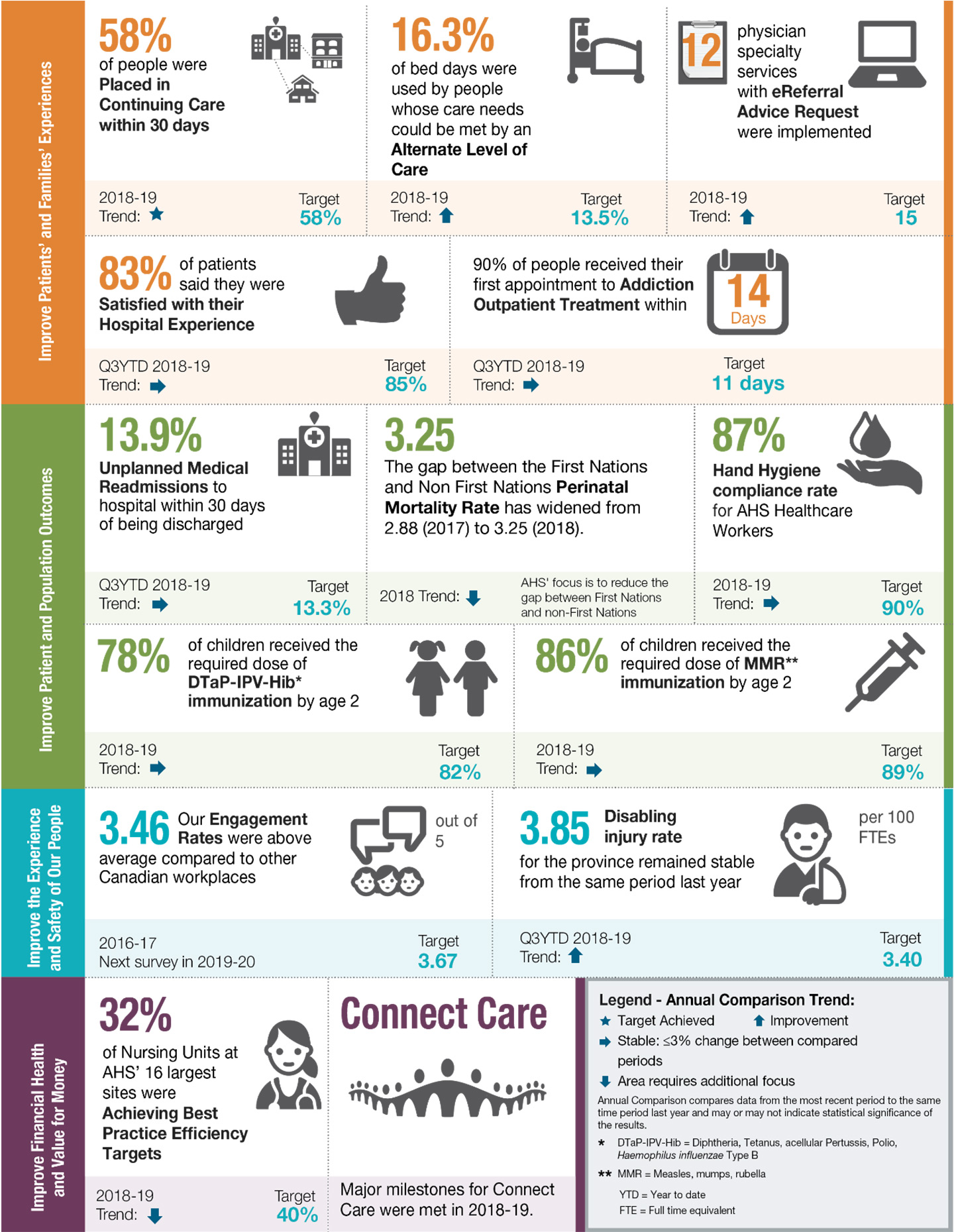
There are a number of measures AHS monitors to help inform other areas of the health system. These monitoring measures do not have targets; however they are familiar and of interest to Albertans. They include a broad range of indicators that span the continuum of care, such as population and public health; primary care; continuing care; addiction, mental health; cancer care; emergency department; and surgery. AHS continues to monitor these measures to help support priority-setting and local decision-making. These additional measures are tactical as they inform the performance of an operational area or reflect the performance of key drivers of strategies not captured in the Health Plan.
The National Comparison column is based on the most recent data available, released May 2019. Parts of this material are based on data and information provided by the Canadian Institute for Health Information (CIHI). However, the analyses, conclusions, opinions and statements expressed herein are those of the author, and not necessarily those of CIHI. Data updated as of May 30, 2019. Definitions can be found at https://www.albertahealthservices.ca/about/Page12640.aspx.
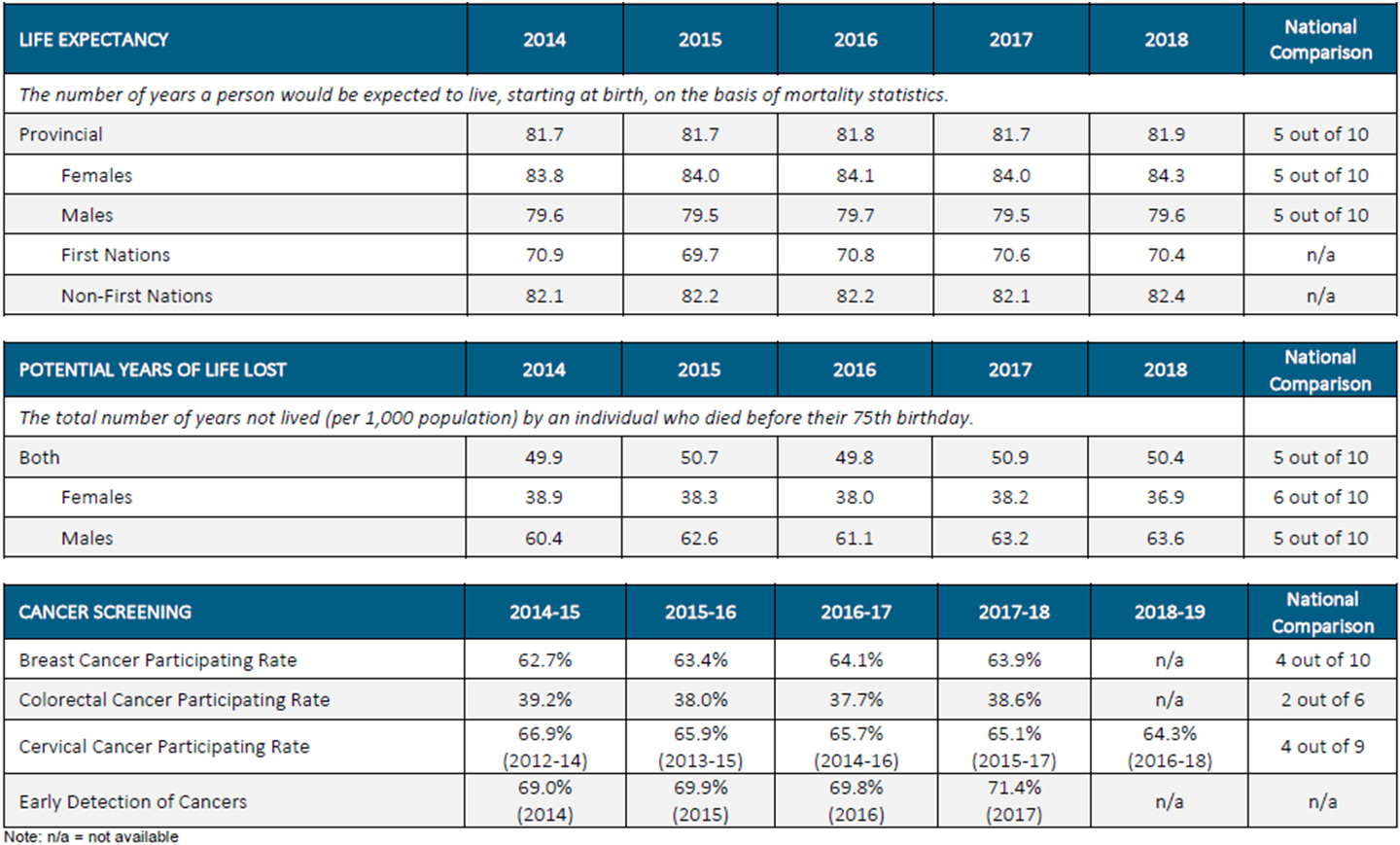
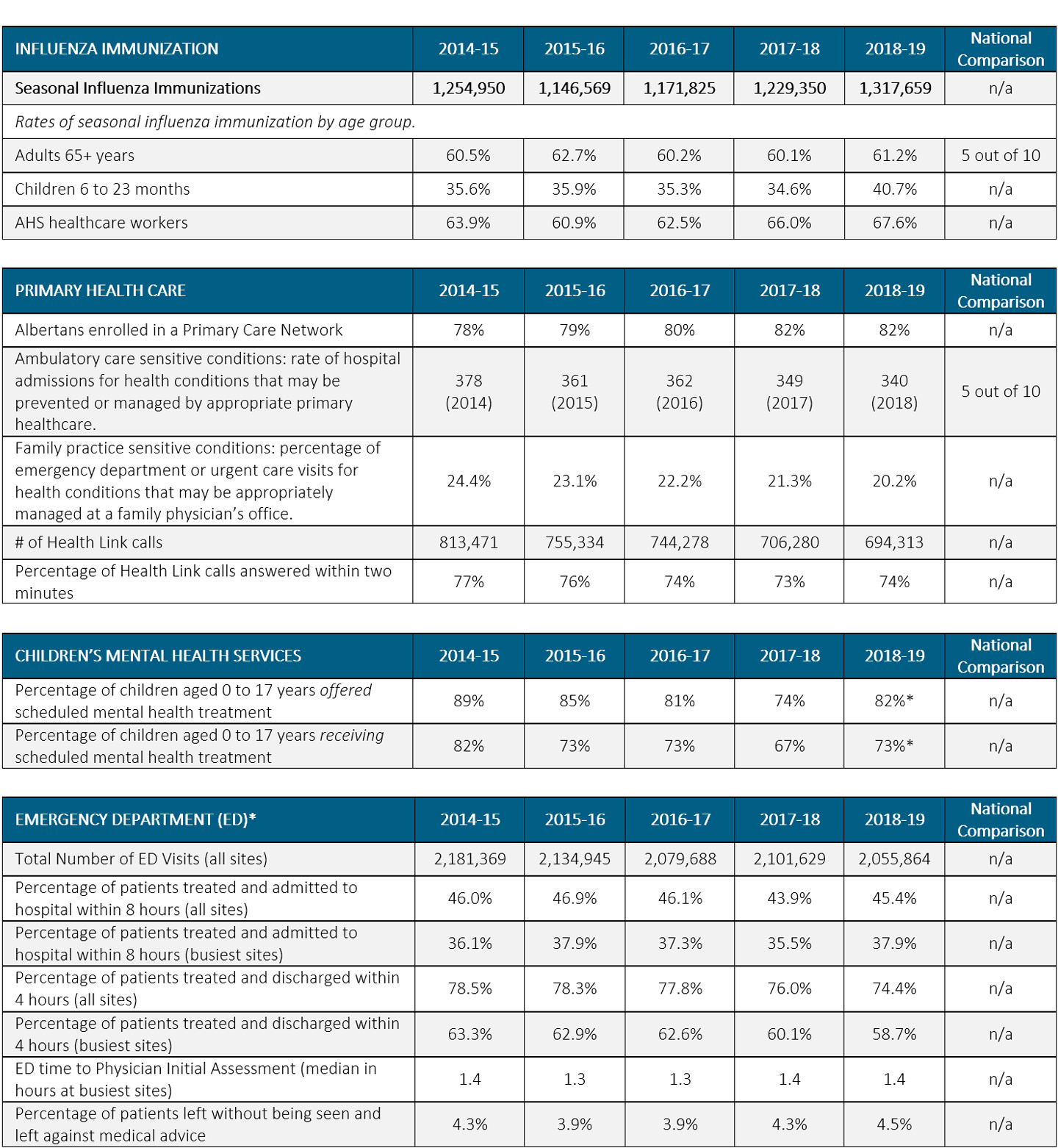
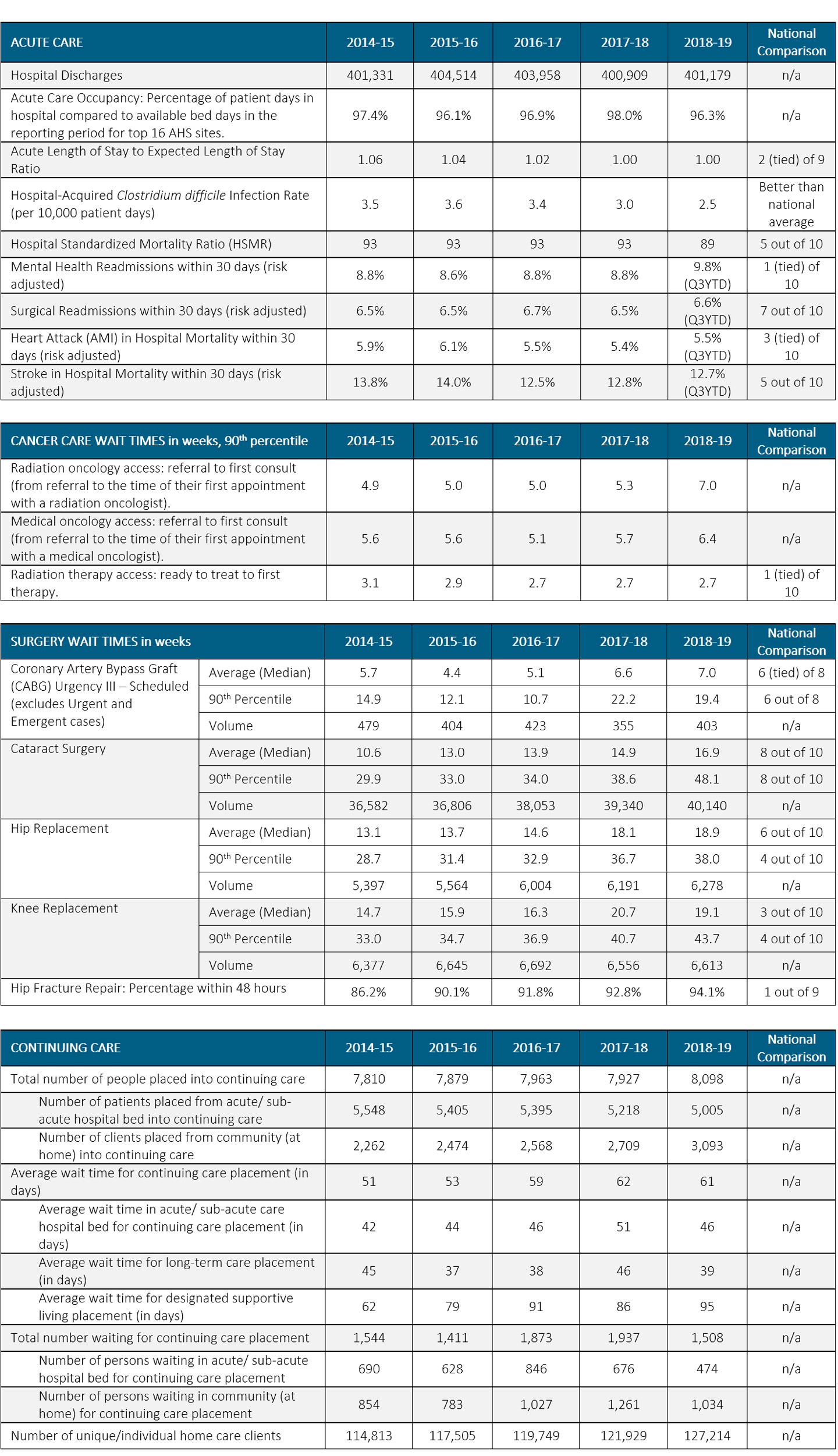
The numbers below provide a snapshot of AHS’ activity and demonstrate the change in services provided in the last few years.
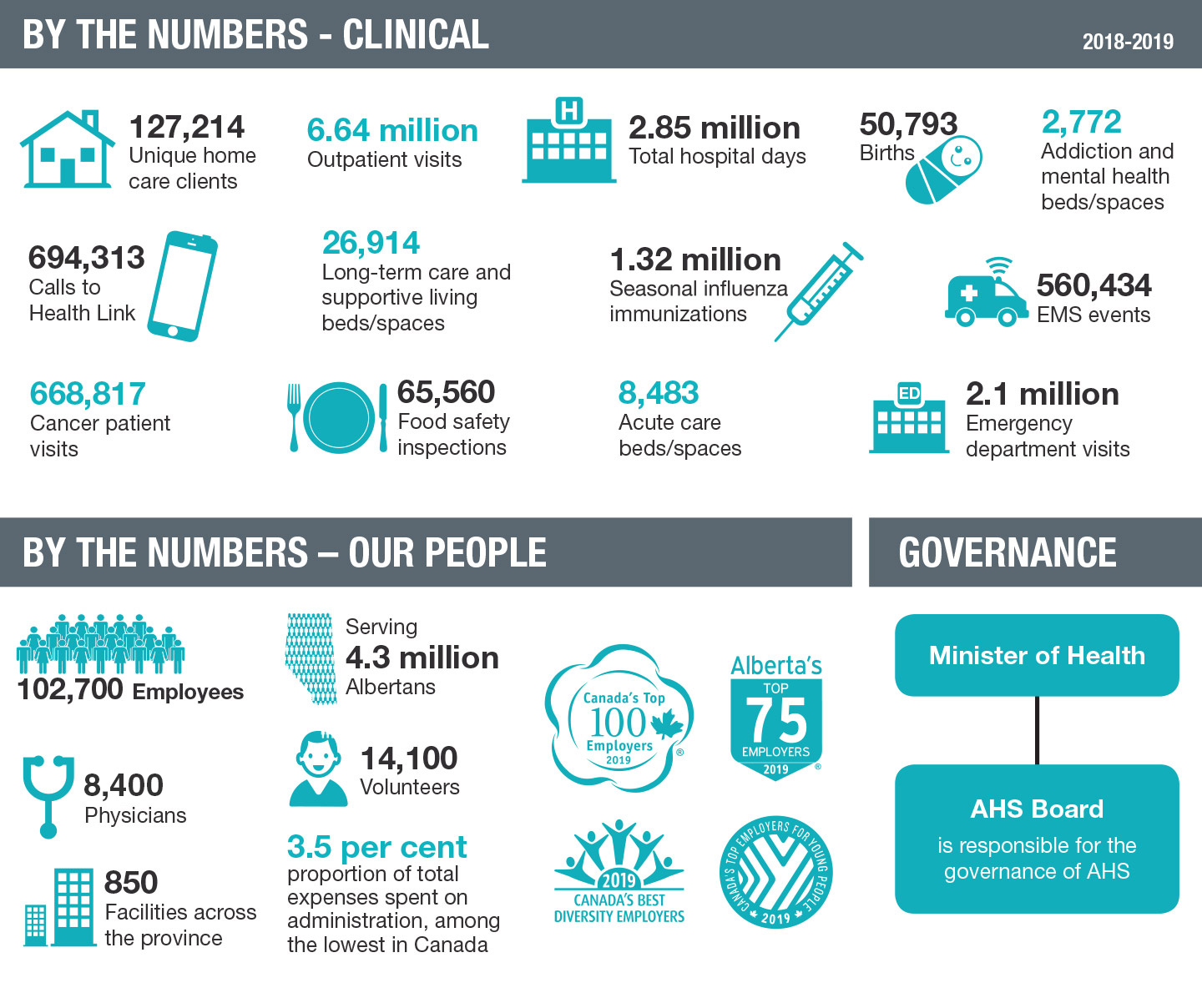
AHS is committed to providing community-based care options for Albertans, including long-term care, designated supportive living, palliative care, and home care. We want to shift services from a focus on care in hospitals and facilities, to the services and resources in the community.
In 2018-19, AHS opened 1,267 net new continuing care beds – compared to 572 beds in 2017-18. Since 2010, AHS has opened 7,463 new beds to support individuals who need community-based care and supports (including palliative). This means that, gradually, people are more efficiently being moved from a hospital setting to a more appropriate (and often more cost-effective) community-based setting.
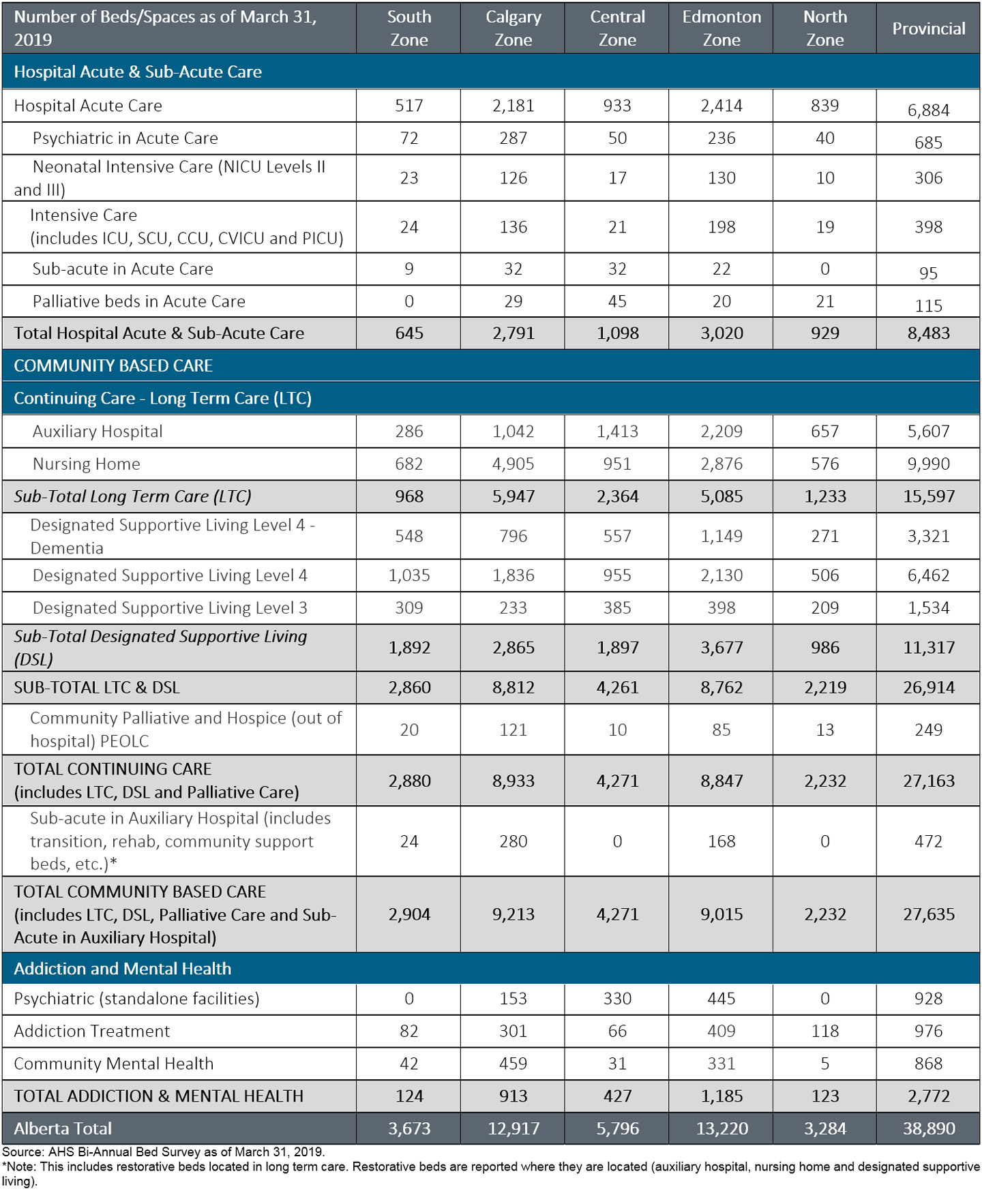
To keep pace with population growth and aging, AHS needs to target increasing community capacity by approximately 1,000 designated spaces annually. This has enabled us to improve our ability to place clients within 30 days of assessment. Finally, the growing of home care services has shown to prevent or delay the need for long term care placement.
